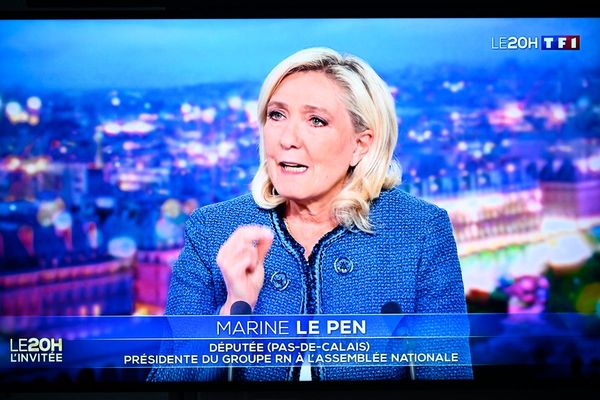
Russia’s promise to use lasers to shoot down drones in Ukraine has prompted widespread scepticism that the novel and possibly nuclear-powered weaponry could be deployed on the battlefield or have any significant impact on the war.
Yuri Borisov, Russia’s deputy prime minister, told the country’s Channel One television station that the new Zadira directed-energy weapon could destroy targets up to 5km away, and had incinerated a drone in five seconds in a test.
But there was no immediate evidence to back up the claim, which was belittled by Ukraine’s president, Volodymyr Zelenskiy, who described it as a “wunderwaffe” – a nonexistent “wonder weapon” which was originally a propaganda invention of the Nazis.
“The clearer it became they [the Nazis] had no chance in the war, the more propaganda there was about the wonder weapon,” Zelenskiy said. “Russia is trying to find its wunderwaffe. Allegedly laser. All this clearly indicates the complete failure of the invasion.”
Laser systems designed to shoot down drones are being gradually developed by the world’s militaries – but most are at a test or prototype stage, and their military utility in a conflict is untried.
Last month Israel’s prime minister, Naftali Bennett, said the country’s military had successfully tested a laser interception system called Iron Beam. “It may sound like science fiction, but it’s real,” he said on Twitter.
An accompanying video showed lasers locking on to and shooting down rockets, mortars and a large drone with similarities to a Turkish TB2, which has been used by Ukraine in defence against the Russians.
Laser weapons work by directing a beam of high energy to burn a target, using large amounts of electricity in the process. In the case of a drone, they melt the exterior and destroy enough of it so it cannot fly.
Israel suggested it was much cheaper to use laser weapons than missile systems to shoot down rockets, missiles and drones. Bennett said the cost was $3.50 a shot, but it is not clear to what extent this figure includes the cost of power.
Some analysts said the Russian systems were powered by small nuclear reactors not dissimilar to those used in submarines.
Last year the UK’s Ministry of Defence awarded three contracts worth about £72.5m in total, two of which were to develop military lasers for frigates and Wolfhound armoured vehicles, with the intention of engaging in “user experimentation” from 2023-25.
Publicly declared laser weapons focus on the targeting of drones and missiles. The use of laser weapons to blind soldiers and civilians is banned by a convention signed by 109 countries, including Russia and Ukraine.
One Russian analyst said Moscow would have to increase production of the weapons to make a difference to the war, in which Russian forces’ attempts to take the Donbas region in eastern Ukraine have stalled to the point of near stalemate.
Dmitry Stefanovich, a research fellow at the Moscow-based Center for International Security, a division of the Institute of World Economy and International Relations, said: “I think for it to become effective, Russia will need to scale up its production of the Zadira lasers. At the moment there simply isn’t enough to make any real difference.”
A related issue is whether Russia had a transportable energy supply to power them.
A second analyst, who spoke on condition of anonymity, said Moscow’s systems were reliant on small nuclear reactors to power them.
“Nothing is being used as far I understand. Russia won’t be using the Zadira or Peresvet lasers in Ukraine. The problem is that these lasers are using nuclear power, which means that if Ukraine would target the installations, it would lead to a small nuclear disaster, exposing the Russian soldiers to radioactive material,” they said.
“I believe this is just a lot of hype. I don’t think Russia would move their laser systems to Ukraine with all the risks involved. For example, Peresvet can hit targets within a 5km range, which means Ukraine would also be able to target it.”







